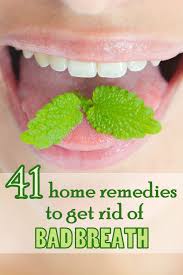 How to get rid of bad breath (halitosis)
How to get rid of bad breath (halitosis)
Bad breath, otherwise known as halitosis, can be embarrassing for sufferers. Considering that the prevalence of halitosis has been reported to be as high as 50% (Pedrazzi et al., 2016), it’s essential to understand the causes. This article explains the causes and how to get rid of bad breath.
Causes of bad breath
Sulphur-producing bacteria
The most common cause of bad breath is food debris and plaque build-up on the teeth and tongue (Porter and Scully, 2006). Your mouth is full of bacteria, and if you don’t remove food debris from your teeth, these bacteria can proliferate. In the process, they release offensive-smelling sulphur compounds which give you bad breath. Conditions such as gingivitis and periodontitis can also cause bad breath (Singh et al., 2015).
Dry mouth
If you’re constantly thirsty, your mouth may not be making enough saliva. Saliva is important, as it helps to keep your mouth clean. Certain medical conditions, medicines, alcohol or stress can cause you to have a dry mouth, which can lead to bad breath.
Smoking
Smoking causes all sorts of health problems, one of which may be bad breath. It increases the concentration of volatile compounds in the mouth and dries the mouth out. This can result in offensive smelling breath (Singh et al., 2015).
Certain foods
Some foods can cause a smelly odour, but usually, the effects are temporary and rectified within a few hours (Porter and Scully, 2006). Onion and garlic, for example, contain high concentrations of sulphur, which can pass into the bloodstream and be released into the lungs, then exhaled (Singh et al., 2015).
Other causes
Other medical conditions can also contribute to or cause bad breath. For example, acid and bile reflux can cause smelly odours, as can respiratory tract infections and tonsillitis (Porter and Scully, 2006). Some severe illnesses like liver or kidney disease may also cause bad breath.
How to treat bad breath?
Tip #1: Practice good oral hygiene
The most important thing you can do to prevent bad breath is to be vigilant about oral hygiene (Porter and Scully, 2006). Brush your teeth and gums at least twice daily (you may consider brushing more frequently after every meal). Be sure to floss daily, as it helps remove trapped particles of food from between the teeth.
You may also consider using an antiseptic mouthwash to fight halitosis. Choose one that contains antimicrobials that neutralise the bad smell or the bacteria that produce it (Pedrazzi et al., 2016).
Tip #2: Avoid dehydration
As mentioned, dry mouth can cause bad breath, so be sure to consume at least two litres of water a day. Try to limit your alcohol intake or avoid alcohol altogether.
Tip #3: Clean your tongue
Did you know your tongue may be causing your bad breath? A build-up of bacteria and food particles at the back of the tongue and in its creases is considered to be a major cause of halitosis (Pedrazzi et al.).
Try gently brushing or scraping your tongue, paying particular attention to the back of the mouth. There are a variety of tongue scrapers on the market – check in with us and we’ll recommend the right one for you.
Tip #4: Try probiotics
You’ve probably heard about how probiotics can help your gut flora, but did you know they may assist with bad breath? A recent study found that oral administration of probiotic lactobacilli improved physiologic halitosis (Iwamoto et al., 2010).
Tip #5: See your dentist regularly
Seeing your dentist regularly for a check-up and clean is an important part of warding off bad breath. Your dentist will be able to identify any oral issues that may be to blame and tackle them before the issue becomes more serious.
We’re here to help!
If you’re concerned about bad breath, please get in touch. We can explain what might be causing the issue (if there is one) and suggest the most effective treatment options for you.
To make an appointment, please click here or call (03) 8521 0777.
References:
Iwamoto, T., Suzuki, N., Takeshita, T. and Hirofuji, T. (2010). Effects of probiotic Lactobacillus salivarius WB21 on halitosis and oral health: an open-label pilot trial. – PubMed – NCBI. [online] Ncbi.nlm.nih.gov. Available at: https://www.ncbi.nlm.nih.gov/pubmed/20659698 [Accessed 17 Jun. 2019].
Pedrazzi, V., do Nascimento, C., Issa, J. and Fedorowicz, Z. (2016). [online] Cochrane Library. Available at: https://www.cochranelibrary.com/cdsr/doi/10.1002/14651858.CD012213/full [Accessed 17 Jun. 2019].
Porter, S. and Scully, C. (2006). Oral malodour (halitosis). [online] Available at: https://www.ncbi.nlm.nih.gov/pmc/articles/PMC1570844/ [Accessed 17 Jun. 2019].
Singh, V., Malhotra, N., Apratim, A. and Verma, M. (2015). Assessment and management of halitosis. – PubMed – NCBI. [online] Ncbi.nlm.nih.gov. Available at: https://www.ncbi.nlm.nih.gov/pubmed/26062259 [Accessed 17 Jun. 2019].
